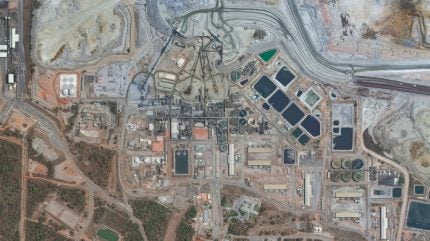
ITHACA, N.Y. — As the Earth’s human population grows, greenhouse gas emissions from the world’s food system are on track to expand. A new study demonstrates that state-of-the-art agricultural technology and management can not only reduce that growth but eliminate it altogether by generating net negative emissions — reducing more greenhouse gas than food systems add.
Employing additional agricultural technology could result in more than 13 billion tons of net negative greenhouse gas emissions each year, as the world seeks to avoid dangerous climate extremes, according to the research published in PLOS Climate.
The work was led by Benjamin Z. Houlton, Dean of the College of Agriculture and Life Sciences at Cornell University, and Maya Almaraz, associate research scholar at Princeton University.
The world’s food system network generates between 21% and 37% of the planet’s greenhouse gas emissions each year. With the global population approaching 10 billion by mid-century, greenhouse gas emissions of the global food system — if left unchecked — could grow to 50% and 80% by 2050, according to the paper.
The new model showed that the most effective way to reduce emissions is to boost soil modifications for crops (biochar, compost and rock amendments), develop agroforestry, advance sustainable seafood harvesting practices and promote hydrogen-powered fertilizer production.
In a process called “enhanced weathering,” for example, silicate rock dust can be added to crop soils every five years to accelerate the formation of carbonates. This process devours carbon dioxide, which can sequester several billion metric tons of carbon per year, according to the paper.
Through agroforestry, planting trees on unused farmland can impound up to 10.3 billion metric tons of carbon annually, while seaweed can be farmed at the ocean surface and then buried in the deep sea, removing up to 10.7 billion metric tons of carbon dioxide.
Supplementing livestock feed with additives could reduce methane emissions by 1.7 billion metric tons and applying biochar to croplands may reduce nitrous oxide emissions by 2.3 billion metric tons.
Previous research has indicated that changing diets around the world is a key to reducing greenhouse gas in the food-system sector but Houlton and Almaraz believe the emission reduction could be much greater.
If the entire human population adopted a so-called “flexitarian” diet by 2050 — which is promoted by the EAT-Lancet Commission — the scientists estimated a gross reduction of 8.2 billion metric tons of greenhouse gas emissions, which falls far short of the net negative emissions goal.
“If people choose to switch to healthier diets, as suggested by EAT-Lancet — and if they can afford it — great,” Houlton said. “But to get the world to net negative greenhouse gas emission — a global imperative to avoid the most dangerous climate impacts — we need to rely heavily on agricultural technology and management techniques.”
Early work on this research was conducted by Houlton when he was the director of the University of California, Davis Institute of the Environment while Almaraz was a postdoctoral researcher at the World Wildlife Fund/National Center for Ecological Analysis and Synthesis at University of California, Santa Barbara.
In addition to Houlton and Almaraz, co-authors on the research, “Model-Based Scenarios For Achieving Net Negative Emissions in the Food System,” are Xingen Lei, professor of animal science and associate dean of research and innovation (CALS); doctoral student Yanqiu Zhou; Michael Clark, University of Oxford; Iris Holzer, Erin Manaigo, Benjamin S. Halpern, Courtney Scarborough all from the University of California, Davis; Laura Rasmussen, University of Copenhagen; Emily Moberg and Melissa Ho, World Wildlife Fund; Edward Allison, WorldFish, Penang, Malayasia; Lindiwe Sibanda, Alliance for a Green Revolution in Africa, Nairobi; and Andrew Salter, University of Nottingham.
By Blaine Friedlander, courtesy of Cornell Chronicle.
I don’t like paywalls. You don’t like paywalls. Who likes paywalls? Here at CleanTechnica, we implemented a limited paywall for a while, but it always felt wrong — and it was always tough to decide what we should put behind there. In theory, your most exclusive and best content goes behind a paywall. But then fewer people read it! We just don’t like paywalls, and so we’ve decided to ditch ours. Unfortunately, the media business is still a tough, cut-throat business with tiny margins. It’s a never-ending Olympic challenge to stay above water or even perhaps — gasp — grow. So …



